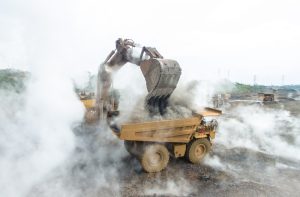
by: Hartatik
Jakarta – Potential availability of used cooking oil (UCO) from households and micro-scale business units reaches 1.2 million kilolitres per year, according to Traction Energy Asia researchers. Of this amount, it is assumed that it will produce a complementary biodiesel raw material of 954,751 kiloliters or 10% of the total allocation for the procurement of biofuels (BBN) determined based on the Decree of the Minister of Energy and Mineral Resources in 2020 amounting to 9,547,506 kiloliters.
“Potentially, if allocating UCO biodiesel is 10 percent of the total national allocation, savings in the national biofuel procurement budget can reach IDR 4 trillion. This can happen because UCO is waste and the price varies, while there is no regulation that sets the price of UCO,” said Traction Energy Asia Research Manager Fariz Panghegar, at the IDE Katadata 2022 discussion entitled ‘Green Circular Economy: Utilizing Used Cooking Oil (UCO) as a Low Emission Feedstock for Sustainable Biofuel’ on Thursday (7/4).
He said, when CPO becomes the main raw material for biodiesel, it will result in high emissions. It can even exceed emissions from conventional diesel fuel. This is caused by the expansion of oil palm plantations into forests and peatlands, as well as waste from unsustainable production systems.
To continue meeting the demand for biodiesel, UCO as liquid waste from cooking can be used as a complementary raw material. Based on the research results of Traction Energy Asia, the use of UCO as raw material for biodiesel can reduce emissions by up to 49 million kg CO2eq. The government is targeting a reduction in energy sector emissions by 2022 by 91 million tons of CO2.

“Biodiesel with a mixture of CPO and UCO can reduce emissions from 8 to 24 percent of the total energy sector emission reduction target if the percentage of UCO biodiesel is added by 10-30 percent in current B30 production,” Panghegar said.
Meanwhile, B30 biodiesel consisting of bio-contents from CPO and UCO is able to reduce emissions from 2.4 to 24 percent of the total energy sector emission reduction target if adding from 10 to 100 percent of UCO biodiesel feedstock in B30 production.
“So, to achieve the national biofuel policy, the rate of reducing greenhouse gas emissions in the energy sector can be increased by adding UCO-based products,” he added.
Panghegar added, there are a number of benefits of using UCO as a complementary raw material for biodiesel. Besides being able to save the national biofuel procurement budget of up to IDR 4 trillion, the use of UCO is also a circular economic activity. This activity can provide additional income for household units and businesses producing UCO.
High potential of used cooking oil
Head of Environmental Economic Studies at the University of Indonesia’s Institute for Economic and Community Research (LPEM UI) Alin Halimatussadiah stated that households have a strategic role to distribute their used cooking oil, since households will also feel the environmental and health benefits. Therefore, she said there are certain costs involved in collecting UCO of varying quality, different pick-up points, and varying willingness to sell.
“Actors involved need to pay attention to various things related to household behaviour, logistics systems and incentives,” said Halimatussadiah, adding that the opportunity to use UCO is very high, but it is still constrained by the lack of regulations specifying UCO as waste that can be used as a complementary raw material for biofuels.
The government, through the Ministry of Energy and Mineral Resources, is currently developing sustainable biofuels by implementing the Indonesian Bioenergy Sustainability Indicators (IBSI). It contains a number of environmental, social, and economic indicators that must be met by business actors to realise sustainable biodiesel.
Director of Bioenergy at the Ministry of Energy and Mineral Resources, Edi Wibowo, explained that the regulation of incentives for UCO-based biodiesel needs to be refined. In the future, there needs to be a synergy between various parties such as local and central governments, business actors, research and development agencies, the media, and the community. He also mentioned that there are a number of regulations that need to be prepared by the central government.
“The central government needs to prepare several regulations related to policies on the use of UCO for biodiesel, such as trade systems, standards, registration, and certification of biodiesel producers and incentives,” he said.
From the producers’ side, Pertamina is currently developing a biorefinery or green refinery which is a strategy to accelerate the national renewable energy mix target by 2025. Pertamina’s biorefinery is a clean energy project processing using renewable raw materials from palm oil, including UCO. Pertamina’s researcher, Bayu Prabowo, said that UCO has great potential to become a complementary raw material.
However, there are a number of things that need to be prepared before developing it. He said, there are additional processes to be added, such as water removal from UCO and esterification. Prabowo said this would have implications for an increase in prices because it requires twice as much energy.
“This does not close opportunities, but some aspects need to be anticipated and to be developed together in the future,” he said.
Update: 11 April 2022, adding graphic of emission from the adding of B30 UCO and B30 CPO separately.













